NO COMPROMISES BETWEEN LIFT, LONGEVITY, POWER TRAIN AND AI INSTRUMENTATION.

OUR PRODUCTS
Agnostic aerial, land, and water solutions, driving efficiency and innovation in today’s dynamic business environment.
Our company stands at the forefront of the drone industry, offering an agile and comprehensive lineup of unmanned aerial, land, and water vehicles (UAVs) meticulously engineered to meet the diverse needs of various sectors. Our technical expertise allows us to provide AI embedded solutions that adapt swiftly to the ever-changing challenges across military and multiple industries.
CURRENT VEHICLES
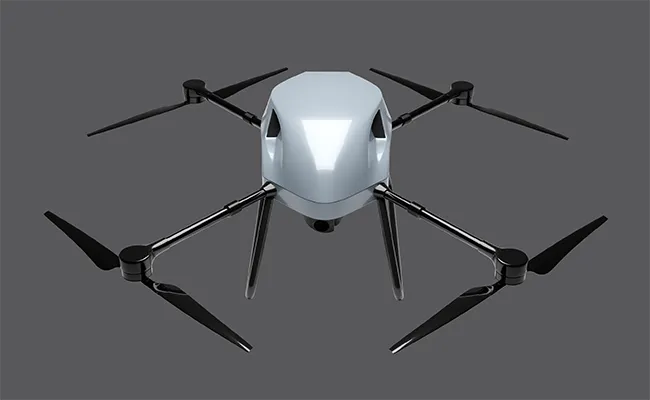
Ark 10
The ARK 10e is an electric propulsion, multi-rotor UAV that is suitable for a broad range of UAS operations acting as an ‘eye in the sky’ for multiple client missions.Its high material resistance, extended range, payload carrying, and VTOL capabilities make it a crucial asset in medium & long range inspection applications.
READ MORE
Designed with high performance capabilities to carry out specialized visual line of sight (VLOS), Extended VLOS (EVLOS) and Beyond VLOS (BVLOS) service missions in challenging Public Safety and Industrial application environments.
Ark 35
The “35” in the “ARK 35” moniker designates a nominal payload weight in kilograms that the aircraft can carry. However, in practice the aircraft will comfortably lift payloads of up 40kg which will extend the types of service operation tasks that the aircraft can carry out.
READ MORE
The ARK 35 fuselage is built from composite materials including carbon fiber, aluminium, airex polymer foam and epoxy resin throughout. The fuselage is divided into an upper rear-deck and a lower deck divided by bulkhead panels. The front deck houses the propulsion unit and control systems while the rear deck holds the aircrafts flight control systems. Designed to fly long distances which it achieves from the wing & rear mounted propulsion motor.
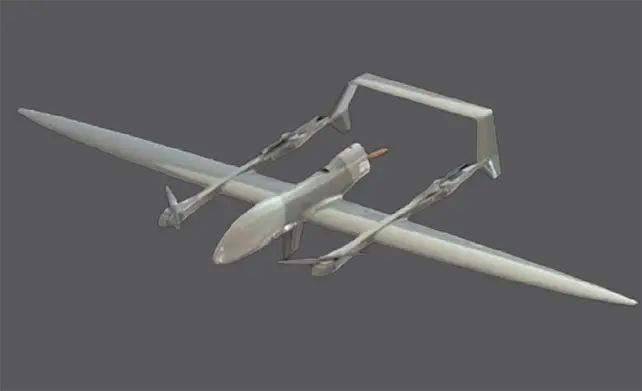
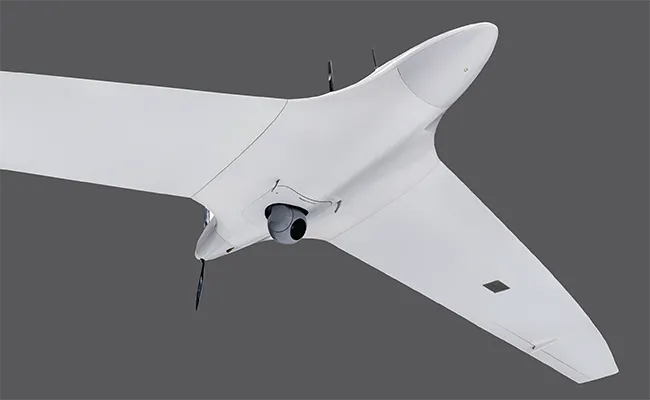
Hirrus
The HIRRUS L and XL are fixed wing unmanned UAV’s that are currently in operation suitable for a broad range of UAS reconnaissance operations. Its high material resistance, extended range, payload carrying, and make it a crucial asset in long range inspection applications.
READ MORE
The Hirrus UAV system consists of a modular drone and a comprehensive ground control station (GCS). The drone’s fuselage serves as the core, housing a versatile payload bay, essential on-board systems (telemetry, control datalink, video datalink, and auto-pilot modules), and a recovery parachute. The UAV’s design allows for easy assembly and customization, with key components including:
- Frontal module: Contains the frontal battery pack with integrated battery management system (BMS)
- Dorsal module: Houses the dorsal battery pack with BMS and the electric propulsion unit
- Left wing: Features elevon servomechanism, satellite command module, Pitot tube, and magnetic compass
- Right wing: Includes elevon servomechanism and satellite command module, with optional redundant Pitot tube and magnetic compass
- The GCS complements the Hirrus UAV, enabling comprehensive mission management. It facilitates mission planning, loading, monitoring, and in-flight adjustments via the ground control station (GCS). The GCS also receives and stores mission-specific data, including command, control, and video information, while offering offline mission playback for thorough debriefing, reception and storage of specific mission data (command, control data, video data), also available for offline debriefing.

KEY CAPABILITIES
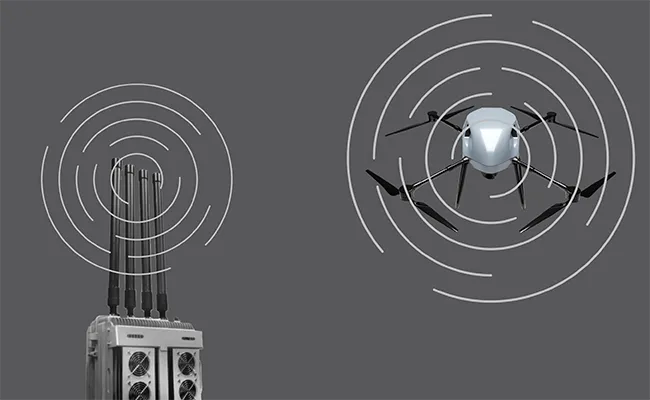
Counter drone
Our Advanced counter-drone systems employ a sophisticated array of technologies to address unauthorized UAV incursions. These integrated solutions utilize 4D radar, radio frequency analyzers, optical and acoustic sensors, coupled with AI-driven algorithms. This multi-faceted approach enables real-time threat assessment and comprehensive spatial coverage, facilitating swift responses to potential aerial intrusions across diverse environments.
READ MORE
The neutralization methodologies in counter-drone technology have evolved significantly, encompassing a spectrum of non-kinetic and kinetic interventions. These range from electromagnetic interference and navigational system manipulation to more direct interdiction methods. Emerging technologies, such as protocol analytics, offer promising advancements for dense urban environments, allowing for precise threat evaluation and mitigation without compromising ambient communications or operations. As aerial threats continue to evolve in complexity, counter-drone systems are adapting commensurately, providing robust protection across a myriad of scenarios.
Drone shield
Drone protection technologies have evolved significantly to address the growing concerns of unauthorized UAV activities. We are in the process of developing our range of advanced systems that employ a multi-layered approach, integrating various sensors such as radar, radio frequency analyzers, optical and acoustic detectors, and AI-driven algorithms. These solutions provide real-time threat assessment and comprehensive spatial coverage, enabling rapid response to potential aerial incursions across diverse environments, from urban areas to critical infrastructure sites.
READ MORE
Mitigation strategies in drone protection now include a range of advanced interventions. These encompass electromagnetic interference, navigational system manipulation, and more direct interdiction methods. New technologies like protocol analytics offer precise threat evaluation in urban settings without disrupting other communications. As aerial threats become more complex, drone protection systems continue to adapt, providing robust safeguards across various scenarios while maintaining operational continuity and public safety.
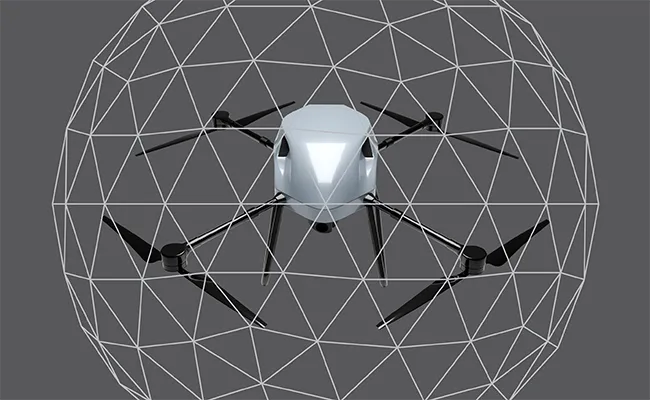
AI-POWERED ECOSYSTEM: COLLABORATIVE INTELLIGENCE FOR ADVANCED MISSIONS
Our systems, seamlessly connects across data clouds and ground control for mission planning, while employing cutting-edge object detection and avoidance algorithms for safe navigation.
We implement machine-to-machine learning, allowing our drones to share insights and improve collectively, continuously enhancing their performance in diverse applications from urban surveillance to agricultural monitoring.
BIG DATA AND AI
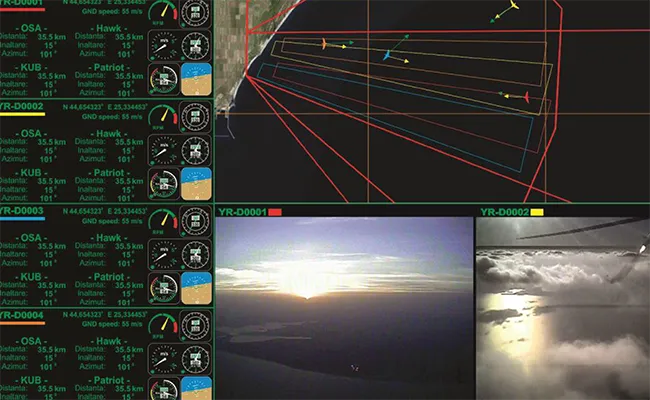
Pre flight planning simulations and tools
Pre-flight planning tools leverage our drones’ advanced lock and load systems and cloud-based data services. Our platform creates highly accurate virtual environments using real-time data, allowing operators to simulate various flight paths and strategies. This comprehensive pre-flight simulation effectively minimizes risks before the actual launch, ensuring optimal mission preparation.
READ MORE
Our cloud-based system facilitates collaborative planning and employs machine learning to continuously improve mission efficiency. By analyzing data from previous flights, the system offers optimized suggestions for safer operations. This comprehensive approach ensures our range to be fully equipped for complex missions across diverse industries, enhancing success rates while reducing operational risks.
Obstacle detection and avoidance
Obstacle detection and avoidance is a crucial feature in modern drones, enhancing safety and operational efficiency. We have focussed to adopt these systems utilizing a combination of sensors, including ultrasonic, Ultra HD cameras, and infrared, to detect obstacles in real-time. Advanced algorithms process this sensor data, allowing drones to navigate complex environments autonomously.
READ MORE
The technology behind obstacle avoidance has evolved significantly, with current systems capable of not just detecting static objects but also responding to dynamic obstacles. Machine learning and AI play a key role in improving these systems, enabling drones to make split-second decisions to avoid collisions. From simple hovering when an obstacle is detected to complex path planning and execution, obstacle avoidance technology continues to advance, making drones more reliable and versatile for various applications, from urban surveillance to agricultural monitoring.
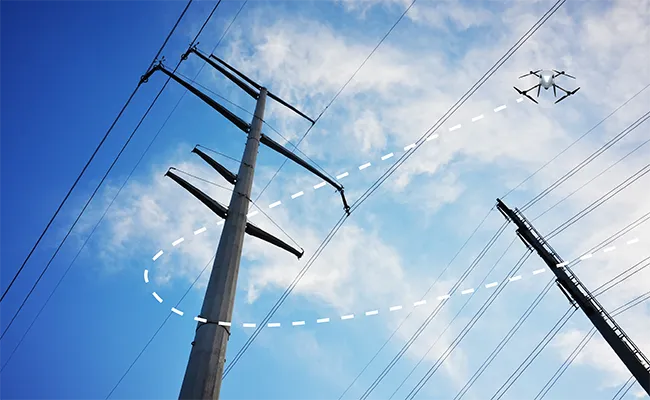
FREQUENTLY ASKED QUESTIONS
Hidden open toggle
Your content goes here. Edit or remove this text inline or in the module Content settings. You can also style every aspect of this content in the module Design settings and even apply custom CSS to this text in the module Advanced settings.
How LONG can the drone battery last for?
The battery life and flight duration of our UAV’s vary significantly across the product range, depending on the specific model and propulsion system used. Here’s a breakdown of the flight times for different drone series:
Ark Series
The Ark series, which uses a hybrid internal combustion engine propulsion, enabling impressive flight durations:
- Ark 150: This tactical UAV is designed to achieve more than 6 hours of autonomy with a MTOW of up to 150kg.
- Ark 35: A smaller tactical class prototype unmanned aircraft with over 12 hours of autonomy operating with a cruise speed of more than 80km/h.
Hirrus Series
The Hirrus series features electric propulsion systems with shorter but still substantial flight times:
- HirrusL: With a 9 kg Maximum Take-Off Weight (MTOW), offers 180 minutes (3 hours) of flying time.
- Hirrus XL: While specific flight time isn’t provided, it has a 15 kg MTOW, which suggests a potentially longer flight duration than the Hirrus L.
- Hirrus offers the ability to operate 2 or more aircrafts at the same time, utilising one control station, offering swarm capability
Quarrus Series
The Quarrus series, fully operational aerial target system, utilizing internal combustion engine or jet propulsion, is designed for extended operations:
- Quarrus I: While exact flight time isn’t specified, it has accumulated thousands of flight hours over 10 years of service.
It’s important to note that flight times can vary based on payload, weather conditions, and specific mission requirements. The Ark and Quarrus series, with their combustion engines, offer significantly longer flight times compared to the electric Hirrus series, making them suitable for extended tactical and training operations.
How much can the drone LIFT?
The lifting capacity of our unmanned aircraft(s) is a crucial factor in their versatility and operational effectiveness. The range of lift capabilities across their product line is significant:
Lightweight to Heavy-Lift Options
- Hirrus L: 9 kg lift
- Hirrus XL: 15 kg lift
- Ark 35: 35 kg lift
- Ark 150: Up to 150 kg lift
This wide range of lifting capacities is vital because it allows for diverse applications across industries. Lighter drones like the Hirrus are ideal for tasks requiring agility and longer flight times, such as surveillance or inspection. In contrast, the heavy-lift capabilities of the Ark 150 enable them to carry substantial payloads, crucial for applications like equipment delivery or more complex sensing systems. The ability to choose from such a broad spectrum of lift capacities means that operators can select the most appropriate drone for their specific needs, optimizing efficiency and effectiveness in various scenarios from tactical operations to industrial applications.
What LINE-of-sight can the drone provide?
Our diverse autonomous unmanned aerial systems offer a wide range of line-of-sight capabilities to suit various operational needs:
Short to Medium Range
Our smaller fully electric UAVs, like the Hirrus and Hirrus XL, are optimized for operations within visual line of sight (VLOS). These typically offer:
- Reliable communication up to 2-5 km in optimal conditions
- Ideal for urban inspections, precision agriculture, and local surveillance
Extended Range
The Ark 35 and larger models in our fleet push the boundaries of extended visual line of sight (EVLOS) operations:
- Communication ranges potentially extending to 10-20 km
- Suitable for broader area surveys, border patrol, and extended tactical missions
Long-Range Operations
Our most advanced models, such as the Ark 150, are engineered for exceptional range:
- Potential line of sight capabilities exceeding 50 km with appropriate equipment
- Designed for long-endurance missions, military applications, and beyond visual line of sight (BVLOS) operations when authorized
It’s important to note that actual line of sight performance can vary based on environmental conditions, payload, and specific mission requirements. Our team can provide tailored solutions to meet precise operational needs across this broad spectrum of capabilities.
R&D VEHICLES
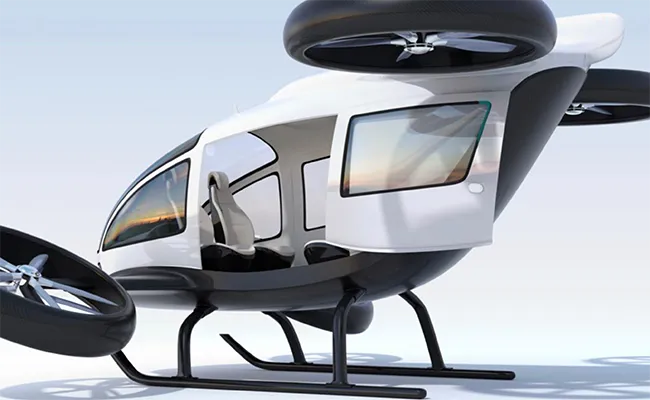
QuadCopter
The QuadCopter is a state-of-the-art passenger aerial vehicle concept designed to transform personal transportation. This advanced quadcopter drone will feature a robust carbon fiber frame, spanning 3 meters in diameter, with four high-performance brushless electric motors. Capable of carrying up to 1200 kg, including 4 passengers, the QuadCopter will combine comfort with cutting-edge technology. Its AI-powered ‘fly-by-wire’ flight control system ensures flight stability in various weather conditions.
READ MORE
Safety is at the core of the QuadCopter’s design, which will incorporate multiple redundant systems for all critical components. The drone’s 5-point safety features include: 1) advanced obstacle avoidance sensors, 2) a ballistic parachute for emergency landings, 3) a fail-safe system allowing safe landing if one motor fails, 4) redundant battery systems, and 5) a secure, encrypted communication link. The QuadCopter will be equipped with a user-friendly 12-inch touchscreen display for flight information and navigation. Its autonomous flight capabilities will enable pre-programmed routes or manual control via a secure smartphone app, making it an ideal solution for urban air mobility that prioritizes both innovation and passenger safety.
Quarrus Series
Quarrus is a cost-effective aerial target system designed to meet diverse training needs for anti-aircraft crews. This versatile platform can be delivered with multiple UAVs, tailored to customer requirements, making it ideal for air defense missile and artillery practice, proving trials, and simulation exercises. The system’s efficiency is enhanced by its streamlined operation, requiring only a three-person team using either fixed or portable terminals.
READ MORE
The Quarrus system has demonstrated its reliability through extensive field use, showcasing a high degree of modularity and ease of service. Its airframes feature common components, allowing for interchangeable parts and simple integration of various payloads and operational electronics. Standard features include video capabilities and GPS navigation, while advanced options such as sea-skimming and pre-programmed loiter and multi-pattern presentation profiles further expand its versatility.
Advanced features
- Able to operate 2 or more aircrafts in the same time, including swarm capability
- Can be used as a carrier for active intervention in the atmosphere
- Ground data and voice communication
- Passive Radar / IR Augmenter and Smoke
- STANAG 4609 compatibility
This combination of affordability, flexibility, and proven performance makes Quarrus an excellent choice for military training and testing applications.
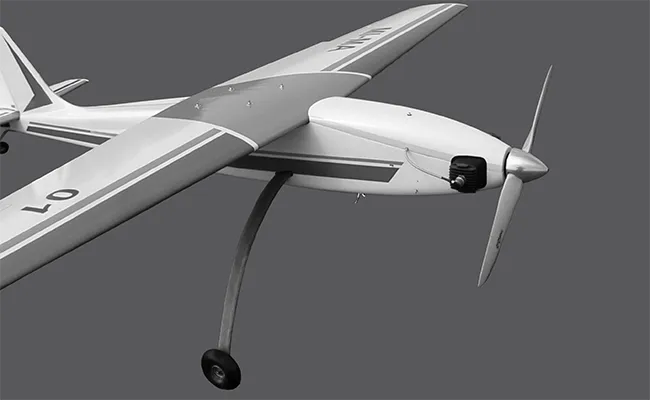
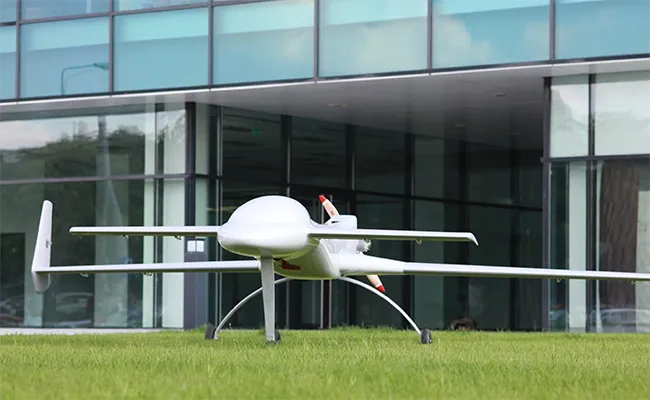
Ark Series
The ARK range of fixed wing unmanned autonomous aircrafts have been designed with high performance capabilities to carry out specialized visual line of sight (VLOS), Extended VLOS (EVLOS) and Beyond VLOS (BVLOS) service missions in challenging Public Safety, Industrial & Military application environments.
READ MORE
The ARK series area high-performance Unmanned Aerial System (UAS) designed for long-range reconnaissance missions with substantial payload capacity.
Key features include:
- Heavy Payload Capability: Carries up from 40kg (88.2lbs) up to a future capacity of in excess of 1000kg of equipment
- Extended Range: Ideal for long-distance operations
- Durability: High material resistance for challenging environments
- Flexible Control: Utilizes both ground and portable control stations
- Advanced Navigation: GPS-guided with custom mission planning
- High-Quality Imaging: Equipped with a 8K Ultra HD camera
- Optional Sensors: Each aircraft can be integrated with multiple sensor solutions depending on the mission parameters
- Real-Time Data: On board edge computing enables seamless cloud integration for instant data access and playback
This versatile UAS excels in complex, long-range missions, offering a combination of payload capacity, endurance, and advanced data capture capabilities. Its customizable mission profiles and risk avoidance features make it a valuable asset for diverse reconnaissance operations.
Ampers
The AMPERS consists of an integration of Land, Air, Water and Sub-Water autonomous vehicles that are all linked and operated via 1 singular Ground Control Station, suitable for a broad range of UAS reconnaissance operations. Its high material resistance, extended range, payload carrying, and make it a crucial asset in long range inspection applications.
READ MORE
- Autonomous Navigation
- Real Time Video Communication
- Voice / Ground Data Communications
- High level of Modularity and Integration
Advanced Features
- Multiple UAV simultaneous Flights
- SWARM Navigation Capabilities
- Satellite Communication Datalink
- Underwater Sub Marine and Tethering Quad Copter
- On-board electric generator
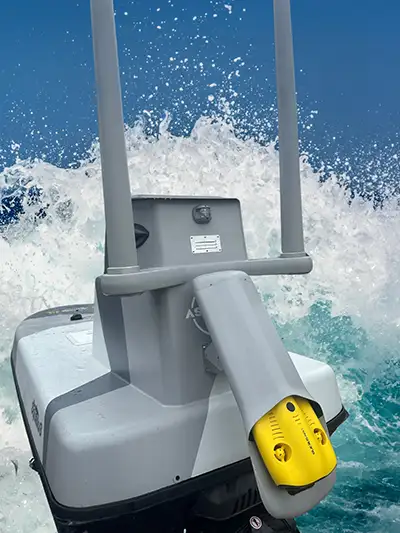

R&D BIG DATA AND AI
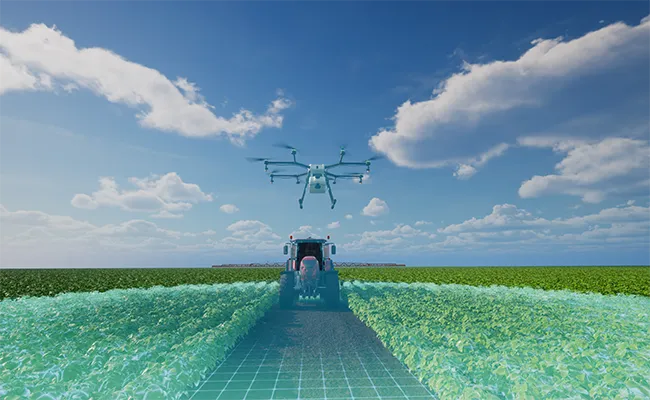
AI and Big data analytics provides mission advantage
At the core of our product range lies advanced big data analytics and artificial intelligence capabilities. We maintain this technological focus as a cornerstone of our R&D roadmap, ensuring we deliver cutting-edge and dependable intelligence solutions that evolve in tandem with market demands.
READ MORE
Our commitment to innovation allows us to consistently provide our clients with the most relevant and reliable technology solutions, keeping them at the forefront of their respective industries.
Our roadmap to success, focus highly of the following areas:
Ground Control and Mission Planning
Optimal vehicle and Interoperability between vehicles, Payloads & Sensors Optimizing Lift, Load and Longevity
Object Detect & Avoidance
Using real time video to support and enhance detect & avoidance maneuverability.
Connectivity & Compute at the Edge
Process and decisioning onboard avoiding the lag between vehicle and operator. Secure, resilient and robust Global connectivity with all vehicles always.
Image, Movement & Contextual analysis
Risk and recognition in context with mission parameters, allowing for decisions grade alterations.
Machine 2 Machine Learning
Mission after mission, Arkory’s flight command and onboard vehicle builds insights for better outcomes.
MISSION CRITICAL – OUR AUTOMATED TASKFORCE
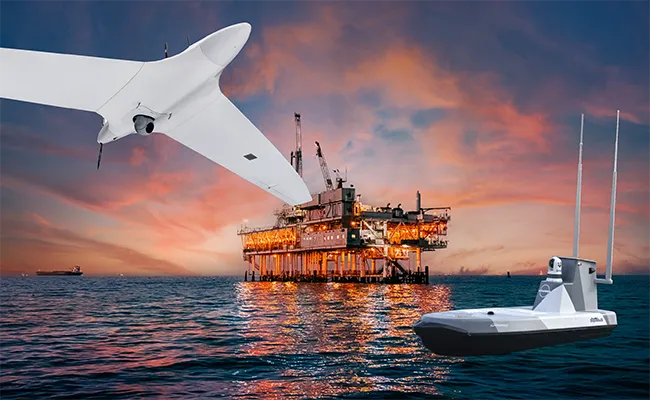
Fully Integrated System
This agnostic task force, composed of aerial, sea-based, and defensive systems, demonstrates the power of integrated, autonomous technology. It stands as a testament to the future of marine security, capable of adapting to any mission, any threat, and any environment. By harnessing the strengths of each component, this versatile coalition of drones serves as an unwavering guardian, protecting our waters with efficiency, precision, and an unwavering commitment to safety.
READ MORE
- Aerial Surveillance (UAV): High-altitude drones scan the area, detecting anomalies and potential threats using AI-powered sensors.
- Maritime Interception (USV): Sea-based autonomous vehicles respond to alerts, intercepting and identifying threats like drifting mines.
- Precision Marking (USV-launched UAV): Specialized drones deployed from USVs mark threats with dye and GPS trackers for easy tracking and disposal.
- Aerial Defense (C-UVS): Anti-drone system detects and neutralizes unauthorized aerial intruders, maintaining airspace security.
- Command Center (GCS): Coordinates all drone operations, processes data, and makes strategic decisions.
In this integrated system, UAVs detect and initially identify threats. USVs then intercept, using deck-launched drones to mark drifting hazards and, if needed, tow them to safety. The C-UVS system provides additional security by detecting and jamming unauthorized remote-controlled vehicles. This multi-layered approach ensures comprehensive marine threat management.

